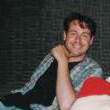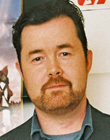|
|
 
|
|
Author
|
Topic: more image than available screen
|
|
|
|
|
|
|
|
|
|
|
|
|
|
|
|
|
|
|
|
|
Monte L Fullmer
Film God

Posts: 8367
From: Nampa, Idaho, USA
Registered: Nov 2004
|
 posted 03-01-2007 03:41 AM
posted 03-01-2007 03:41 AM




quote: Frank Angel
And of course, there is nothing quite as dramatic as running a 1.37 cartoon before a scope feature and having the curtain and mask widen to the extreme for the main feature; and if the scope feature has a Fox logo with the full music, well, that's just projectionist Nirvana.
...and try that with dbl masking tabs - first the title curtain closes when the cartoon "the End" hits the screen which during this time, the masking tabs are adjusted for 2.35/1 Scope from our 1.66/1 "Regular" lens settings (remember when the term regular was used before the term FLAT came on board in the late 60's??), a few seconds of dead silence, dowser opens from the changeover, Lionel Newman's "FOX FANFARE" trumpets behind the screen,the title curtain opens up to the FOX logo with the old "A CinemaScope Picture" trademark..in 4trk mag stereo ...yes, it's definitely a nirvana that sends shivers up the spine.
that was Grand Presentation in those days.
And it was a great tribute when the first Star Wars movie, in 1977 reintroduced the 2nd half of that fanfare music that was played during the "CinemaScope" part of that trademark, Before then, FOX only had the opening section of the Fanfare for both flat and scope movies..
| IP: Logged
|
|
Gunnar Johansson
Expert Film Handler

Posts: 181
From: Gothenburg, Sweden
Registered: Mar 2003
|
 posted 03-01-2007 04:28 AM
posted 03-01-2007 04:28 AM





quote: Frank Angel
have our friends across the lake moved more toward our 1.85 mistake?
I think we are moving toward the mistake. At least in Sweden, though Iīm not sure why. Most multiplexes only have two formats, and itīs usually 1,85, maybe because we have so many american prints. Our new multiplex has three formats (1,66 being the third one) but we donīt use it. Maybe because not everybody in the booth can see, or care about the difference.
When we had adverticing in 35 mm (until this january 1) we ran (at my single) them in 1,66, but not many others did, and now itīs all digital, so we run it in 1,85.
Iīve been told that the reason this side of the pond used 1,66 was that we needed the "extra height" for subtitles, so youīd get the same picture composition but with the subtitles below, not in the picture as with 1,85. I was taught that 1,85 was once known as "french widescreen", maybe because they also didnīt need subtitling as much, but a colleague said that the "real" french widescreen was 1,75 (a precursor of 16:9?).
| IP: Logged
|
|
|
|
|
|
|
|
|
|
All times are Central (GMT -6:00)
|
|
Powered by Infopop Corporation
UBB.classicTM
6.3.1.2
The Film-Tech Forums are designed for various members related to the cinema industry to express their opinions, viewpoints and testimonials on various products, services and events based upon speculation, personal knowledge and factual information through use, therefore all views represented here allow no liability upon the publishers of this web site and the owners of said views assume no liability for any ill will resulting from these postings. The posts made here are for educational as well as entertainment purposes and as such anyone viewing this portion of the website must accept these views as statements of the author of that opinion
and agrees to release the authors from any and all liability.
|

 Home
Home
 Products
Products
 Store
Store
 Forum
Forum
 Warehouse
Warehouse
 Contact Us
Contact Us




 Printer-friendly view of this topic
Printer-friendly view of this topic












![[thumbsup]](graemlins/thumbsup.gif)


![[Confused]](confused.gif)



